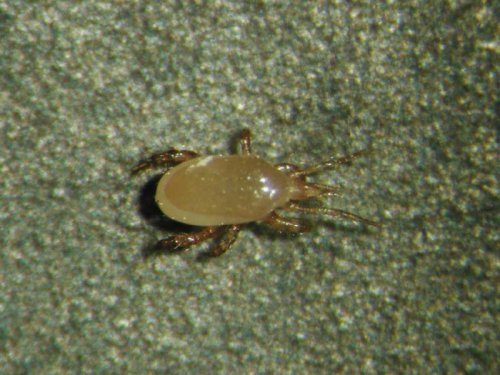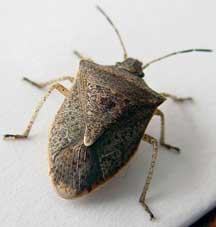Navigation
Install the app
How to install the app on iOS
Follow along with the video below to see how to install our site as a web app on your home screen.
Note: This feature may not be available in some browsers.
More options
You are using an out of date browser. It may not display this or other websites correctly.
You should upgrade or use an alternative browser.
You should upgrade or use an alternative browser.
Looking for a little more knowledge
- Thread starter Chrispy
- Start date
Eric Adrignola
Avid Member
some do have black highlights on their heads - but it can be a burn, too.
Frank Castle
New Member
Chrispy said:so if its more of a permanant black thats more likely to be a burn....? will highlights change colours ? or...?
I Have a male veiled. He has these black stripes that come out behind his eye turrets and go back and up his head. These are permenant markings from my observations. Maybe you can see them in my gallery pics. Burns will be a uniform shape and gray to black, you will notice the diffrence in the skin between burns and Markings, burns have a diffrent texture. The markings on my veiled are symetrical on both sides of his head. I hope this helps a little.
Frank
Heika
New Member
My leaf chams have had a parasitic mite. I used food grade diatomaceous earth to take care of them, and it worked well. However, a word of caution... I am the only person that I know of that has used it directly on a chameleon, and it may not be entirely safe. I dusted each of the chameleons carefully, with the exception of the face. Breathing the dust isn't a great thing, so I removed all of the chameleons from their tanks and sifted the diatomaceous earth into the soil and over the furnishings and plants. I let the dust settle for a couple of hours before placing the chameleons back into them. Because diatomaceous earth doesn't work as well when it is wet, I misted a seperate enclosure, placed the chameleons into that enclosure, and then put them back into the tanks after an hour. It takes about 2 days of this to kill the mites. I am not sure if it is related to the treatment or not, but about two weeks later, one female developed a URI. I treated her with baytril and she recovered. I felt it was a better option than the poisons that are sold to treat mites.
Heika
Heika
lowendfrequency
New Member
Spider mites drink the sap from plants, so I doubt that is what you are dealing with. Most likely bird or rodent mites. They are attracted to moisture and humidity.
Jordan
New Member
This is a picture of a insect that I know can be found in the south east of the united states and eats on other small insects such as mites, gnats and larva. They are also safe for chameleons to eat if the decide to. People who farm order these guys in large numbers and release them into their crops to stop infestations.
(hypoasis aculeifer)
View attachment 433
(hypoasis aculeifer)
View attachment 433
Last edited:
LunaC
New Member
Jordan, I don't mean to be rude, contradictory or smart alecky, but the bug you have posted the pic of is a Stink Bug (also called Shield Beetles/Shield Bugs), not a Hypoaspis aculeifer. I can't say a Stink bug would be toxic, but they do live up to their name! Not sure I would offer one to my chams.
The Hypoaspis aculeifer is, as you say, a tiny predatory mite that does eat eggs, larvae and pupae of fungus gnats, nematodes and other tiny critters that live in soil, and it is beneficial in garden/farm pest control.
Here's a pic of Hypoaspis aculeifer and to the right of it, another Stink Bug. Again, not trying to be rude
The Hypoaspis aculeifer is, as you say, a tiny predatory mite that does eat eggs, larvae and pupae of fungus gnats, nematodes and other tiny critters that live in soil, and it is beneficial in garden/farm pest control.
Here's a pic of Hypoaspis aculeifer and to the right of it, another Stink Bug. Again, not trying to be rude
Attachments
Jordan
New Member
I may have used the wrong name. If you look closely at my bug then your stink bug you will notice slight differences. The shell does not run in a straight line across in my it is two horns at each end. At the bottom of the shell a line runs the whole length it looks like that of a snapping turtle and is very jagged. I do not take offense. I would rather have some one correct me then give something to their chameleon that will kill them. The first time he ate one I had a plant outside and did not see the bug during the cleaning of the plant. I then saw him and tried to remove him. I lost sight of him again but my chameleon did not.
Last edited:
ClmbrJ
New Member
although I can't give you the scientific name for either beetle they are indeed different.
Stink bugs are prevelant here in central texas and one thing both the female and male have is a pronounced feeding "tongue" look s like a horn sort-of.
the one in the pic above does not have this so I would have to say not stink bug.
And since Jordan brings up bugs in plants, this happens to me a lot and one thing I have noticed is that my Cham doesn't really eat things he is not supposed to. I had him outside the other day when my daughter syays "Dady are lady bugs jet fuel?"
"no sweetie, why?"
"because there is one on his tree"
(in my head)"oh sh!t"
By the time I got to his tree he was watching the lady bug with both eyes and you could almost see him make the descion not to shoot.
I have also seen this with bright colored butterflies, and spiders....he watches...but does not eat. Now at night if a moth flies by...WHAM! June bug? Loves em!
kinda interesting...
Stink bugs are prevelant here in central texas and one thing both the female and male have is a pronounced feeding "tongue" look s like a horn sort-of.
the one in the pic above does not have this so I would have to say not stink bug.
And since Jordan brings up bugs in plants, this happens to me a lot and one thing I have noticed is that my Cham doesn't really eat things he is not supposed to. I had him outside the other day when my daughter syays "Dady are lady bugs jet fuel?"
"no sweetie, why?"
"because there is one on his tree"
(in my head)"oh sh!t"
By the time I got to his tree he was watching the lady bug with both eyes and you could almost see him make the descion not to shoot.
I have also seen this with bright colored butterflies, and spiders....he watches...but does not eat. Now at night if a moth flies by...WHAM! June bug? Loves em!
kinda interesting...
Similar threads
- Replies
- 8
- Views
- 2K




